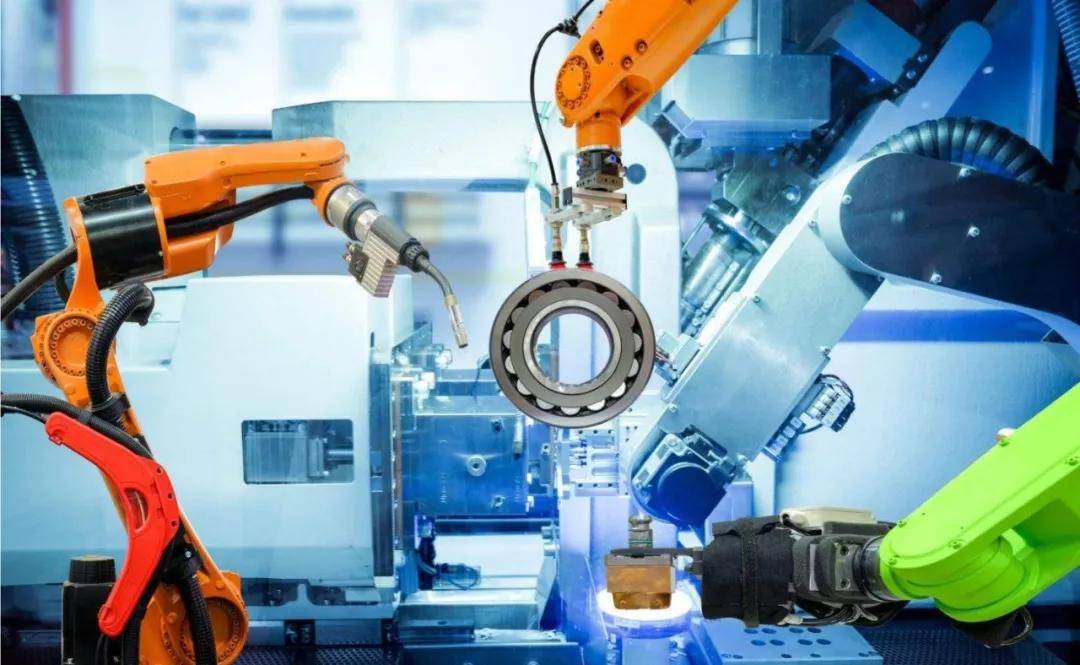Industrial automation refers to the use of automatic control technology and computer technology to achieve the automation of industrial production, that is, using automation equipment and systems to replace manual operations, achieving automation, intelligence, and efficiency in the production process, helping enterprises improve production efficiency, reduce labor costs, improve product quality and safety, and thereby enhance enterprise competitiveness and economic benefits.
By using industrial automation, production efficiency can be improved. Introducing automation equipment and systems to achieve mechanized and automated production not only reduces labor input, but also ensures continuous production. Although there will be some investment in equipment and systems for the early construction of industrial automation. However, in the long run, a reduction in human resource investment and more precise and stable operation in the production process can reduce labor and production costs.

How to Build an Intelligent Industrial Automation Network Using Industrial Switches
Building an intelligent industrial automation network is a complex task that requires careful planning and execution. Building an intelligent industrial automation network usually involves the following steps and precautions:
1. Network design: Firstly, you need to conduct network design to determine the required network topology and architecture, as well as future growth and expansion. This includes determining the subnet, network interconnection method, and layout of network devices.
2. Choosing an industrial switch: Choosing an industrial switch that suits your needs is very important. Ensure to select a Ethernet switch with the appropriate number of ports and support the required protocols and functions. Considering the requirements of the industrial environment, choose an industrial switch with characteristics such as anti-interference, dust and moisture resistance, and high/low temperature resistance.
3. Connecting devices: Connect various industrial devices (such as sensors, PLCs, HMI, etc.) to industrial switches. Use appropriate cables and connectors to ensure connection reliability and data transmission quality.
4. Configure and manage Ethernet switches: Configure industrial switches to meet your network needs. This includes setting port parameters, VLAN partitioning, QoS (Quality of Service) settings, security measures, and network monitoring. Ensure the use of secure authentication and access control mechanisms to protect network security.
5. Implement network services: Implement network services as needed, such as DHCP (Dynamic Host Configuration Protocol), NTP (Network Time Protocol), and SNMP (Simple Network Management Protocol). These services help with automatic configuration, time synchronization, and remote management of network devices.
6. Testing and optimization: After deployment is completed, network testing and optimization are carried out to ensure the stability and reliability of data transmission. Conduct network performance testing, bandwidth measurement, and troubleshooting to ensure that the network meets the requirements of industrial automation applications.
7. Security considerations: Ensuring network security is crucial. Use security mechanisms such as firewalls and virtual private networks (VPNs) to protect the network from unauthorized access and attacks. Regularly update the firmware and software of the Ethernet switch to address any known vulnerabilities.
8. Monitoring and maintenance: Continuously monitor network performance and device status, and promptly identify and solve potential problems. Perform regular maintenance, including cleaning equipment, replacing faulty components, and updating software.
By following the steps and precautions above, you can use industrial switches to build an intelligent industrial automation network. Such a network can support real-time data transmission, remote monitoring and control, and improve production efficiency and reliability.
The Houshi industrial switch is designed to meet the demanding requirements of industrial automation networks. The Houshi industrial switch has features such as industrial grade design, high reliability, and strong security, and supports multiple protocols, allowing it to integrate with various industrial equipment and systems.
It should be noted that building an intelligent industrial automation network may be challenging, but it is crucial for building an intelligent factory. Based on the precautions outlined in this article, an intelligent industrial automation network that is scalable, secure, reliable, and easy to manage can be designed. By using Houshi industrial switches, you can simplify the process of building and managing industrial automation networks while ensuring high performance and reliability. With the right planning, execution, and tools, you can create an efficient, high-yield, and competitive intelligent industrial automation network.
Contact: sales
Phone: 18688787693
E-mail: sales@hsindustrialswitch.com
Add: Room 608, Building B,GaoXinQi TEC Park,Baoan District, ShenZhen,China